Did you know Scotland’s South Asian community stretches from the Scottish borders to the Western Isles? Bangladeshis, Indians, Nepalis and Pakistanis among others, can be found everywhere, from the smallest towns to the big cities.
We looked into the story of Dundee’s South Asian community, which dates back to the 1920s when Dr Jainti Saggar settled there. One of the city’s first South Asian residents, Sagger was a local GP who helped to open a psychiatric clinic for early mental health treatment. He went on to become the first Asian local authority councillor in Scotland in 1936.
Saggar’s legacy continues today with his namesake, Saggar Street, situated in the west of Dundee. More recently, his name was given to a scholarship at the University of Dundee.
“He was a man of compassion for everyone in need…he came to Dundee from halfway across the world but no son of Dundee had greater love for its people or worked harder in their interest.” – Lord Provost of Dundee, William Hughes
Hearing of Dr Saggar’s success (and possibly drawn to the jute mills), it’s believed a small number of South Asian citizens working as peddlers (door-to-door salesmen) began to trickle into Dundee from 1927. Some settled in the city and brought their wives and children over from South Asia.
As the South Asian community grew, interest in acquiring places of worship that could accommodate Hindu, Muslim and Sikh practices grew too.
Re-Use and Re-Purpose
Beginning as early as the 1940s, Sikh, Muslim and Hindu communities have used houses and tenements as places of worship.
Glasgow was the first port of call for many. The Gorbals housed Scotland’s first mosque on Oxford Street and the first Gurdwara on South Portland Street. By the 1960s, Bank Street was home to the first Hindu Mandir.
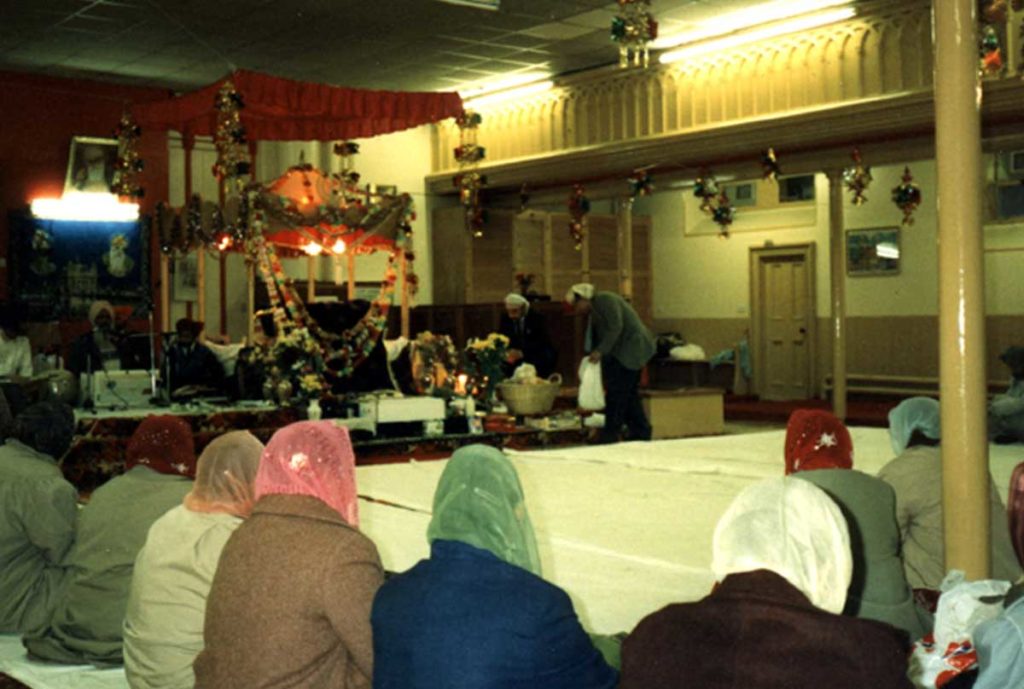
After the Second World War, there was a movement of migration for Sikhs, moving from India to Britain. Many settled in Leith and continued their cultural traditions and repurposing existing buildings as gurdwaras (places of worship). Sikh women traditionally cover their heads when they go to the gurdwara, seen here in the 1980s. © City of Edinburgh Council. Licensor www.scran.ac.uk.
Dundee wasn’t far behind though. By 1968, the Okhai family had begun works to convert a flat on Erskine Street into a mosque. It would become the first site transformed by Dundee’s Muslim community into a place of worship, accommodating 100 worshippers and classes for children.
For Dundee’s early Sikh and Hindu communities, it was normal to congregate at each other’s houses to celebrate festivals such as Diwali, the Hindu festival of light.
Today, these religious communities have also purchased former churches, warehouses and synagogues. These types of buildings were easy to convert, as removing the pews created the open central space the congregation needed to conduct various ceremonies.
In Dundee, most South Asian places of worship are still repurposed buildings. Only signage or subtle decoration indicate these new uses, yet these unassuming buildings hold centres of life, celebration and colour.
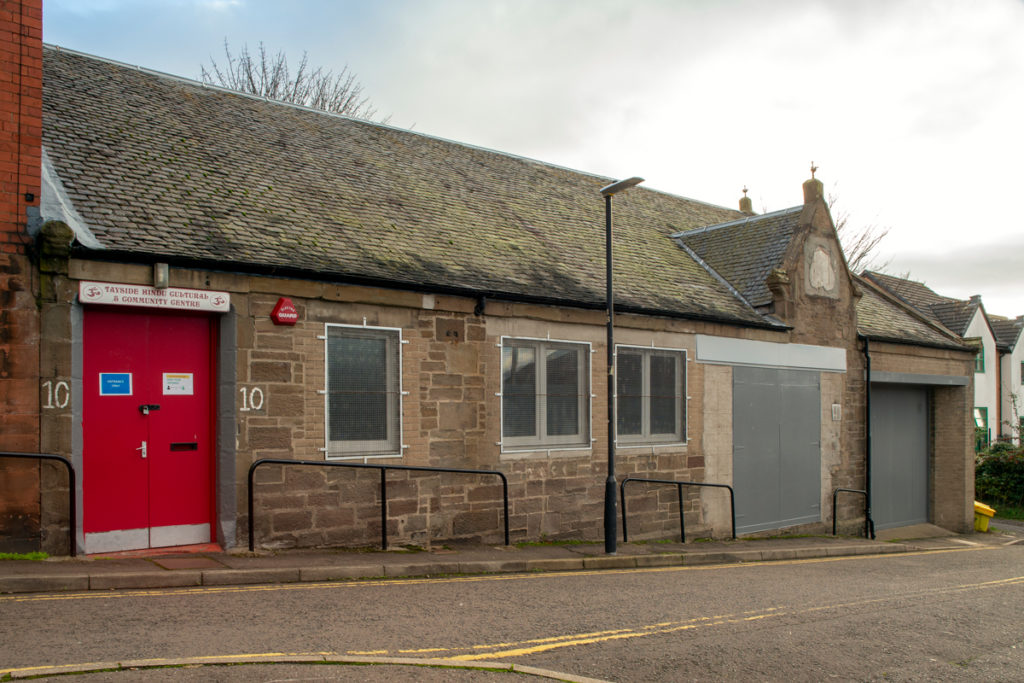
The Tayside Hindu Cultural & Community Centre was originally built as a Christian Mission Hall.
Dundee’s South Asian places of worship
Since 1976, the Tayside Hindu Cultural & Community Centre, a former Mission Hall, has been in the possession of the South Asian community. Initially, the building provided a space for the city’s Sikhs and Hindus. But as the size of each group grew, so did their need for separate spaces.
Taylor’s Lane became the Hindu Mandir and continues to be a central space of worship and celebration for Hindus in Dundee.
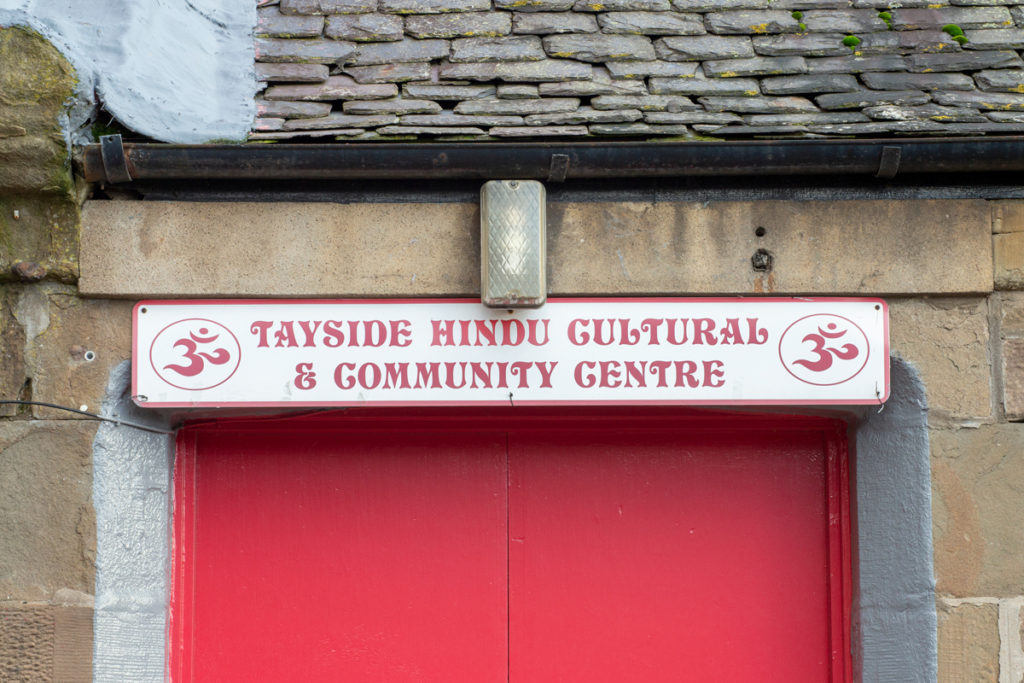
The sign above the Centre, also known as a Hindu Mandir, shows the sacred symbol of Om indicating the religious purpose of the site.
When the Mission Hall became the centre of Dundee’s Hindus, the Sikh community moved to another reused building in the Hilltown area. Situated off one of the main streets, Victoria Road, the Sri Guru Nanak Gurdwara has been operating in the 19th century house for nearly 40 years.
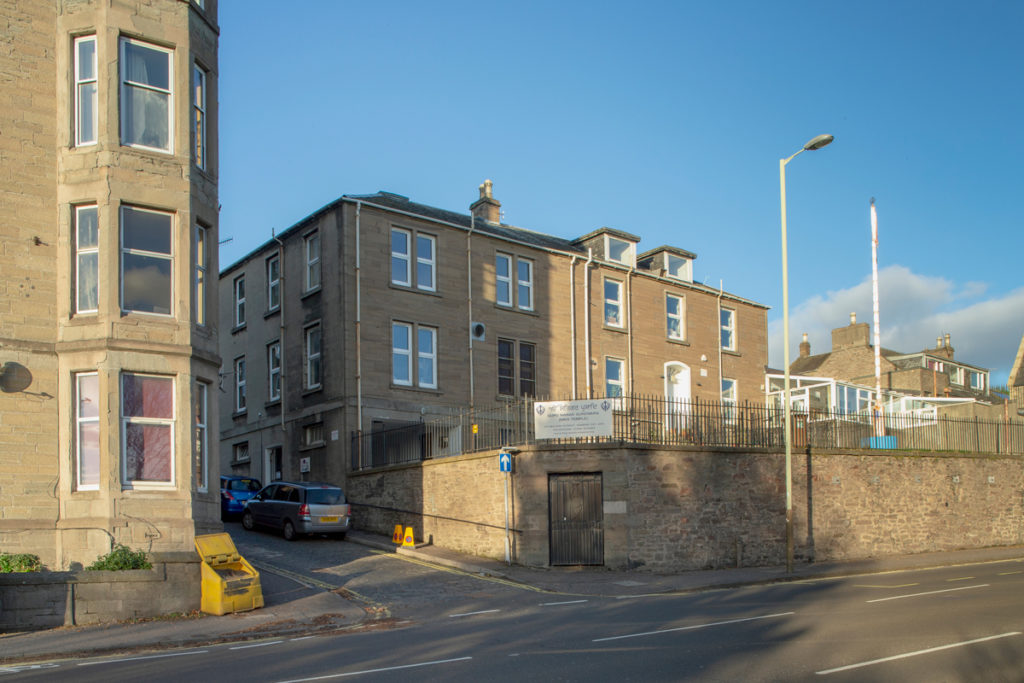
The flagpole outside of the Sri Guru Nanak Gurdwara is the Nisha Sahib, which means this is the house of the Guru Granth Sahib Ji, the collection of Sikh holy scriptures. Most Gurdawaras have a Nisha Sahib. They signify that it is a space open to all, and a spiritually and politically free space.
In 1983, just a few doors away from the Gurdwara, a new mosque was founded on Victoria Road. Tayside Islamic & Cultural Education Centre opened their doors two years later, residing in the former Wesleyan Church.
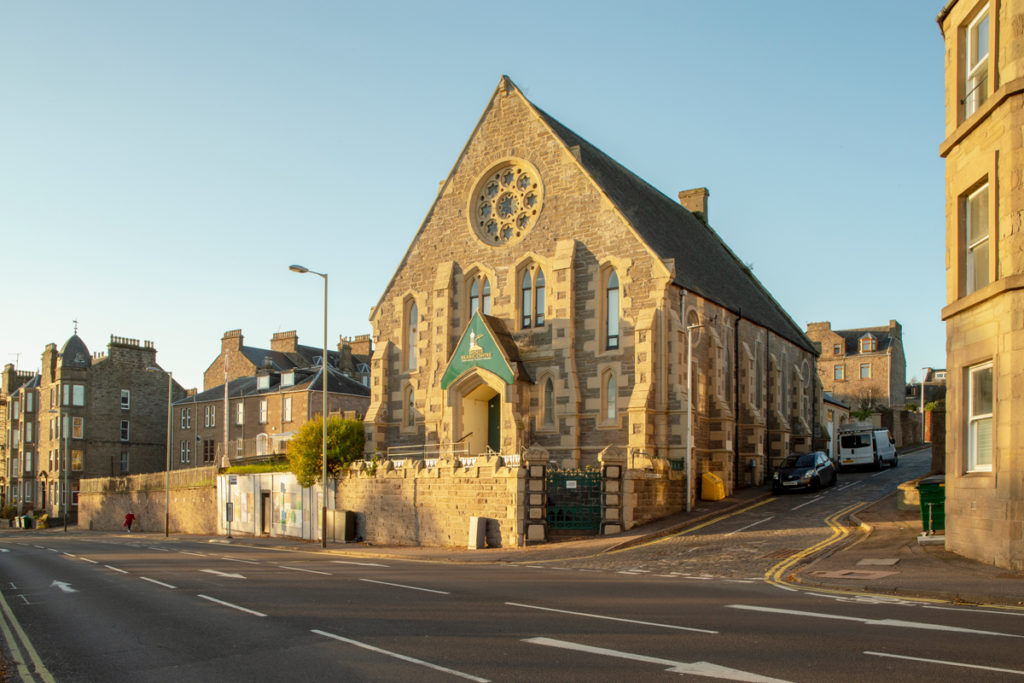
The gabled entrance indicates the religious use of the building, with the green backed white minaret and golden dome adorned with crescent moons both common features of a mosque.
Re-use of existing buildings continued into the mid-1990s. The former Dundee City Council offices on Dura Street were leased for free to another part of the Muslim community. The Jame Masjid Bilal was formed and converted this anonymous looking two-storey building into a mosque and Islamic centre.
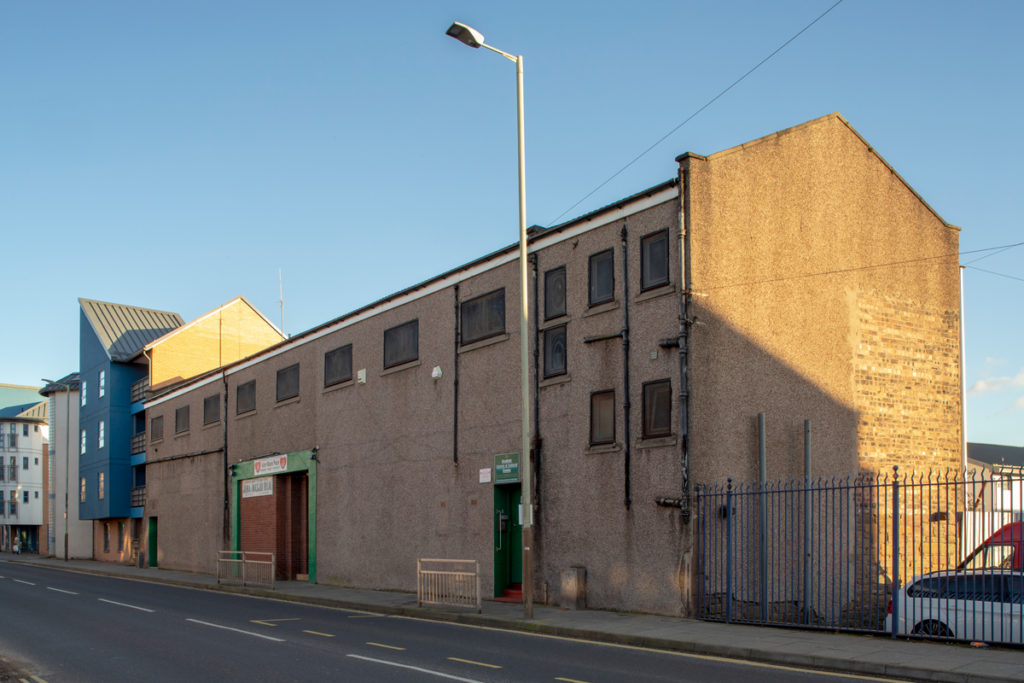
The Jame Masjid Bilal Mosque on Dura Street, Dundee.
Modern mosques of Dundee
As Dundee’s Muslim population grew, the city’s first mosque moved from Erskine Street to Hilltown in the 1970s. But by the 1990s, there was talk for a far larger and purpose-built place of worship in the works. Completed for the millennium, Miln Street became the site of Dundee Central Mosque, the first of its kind in the city.
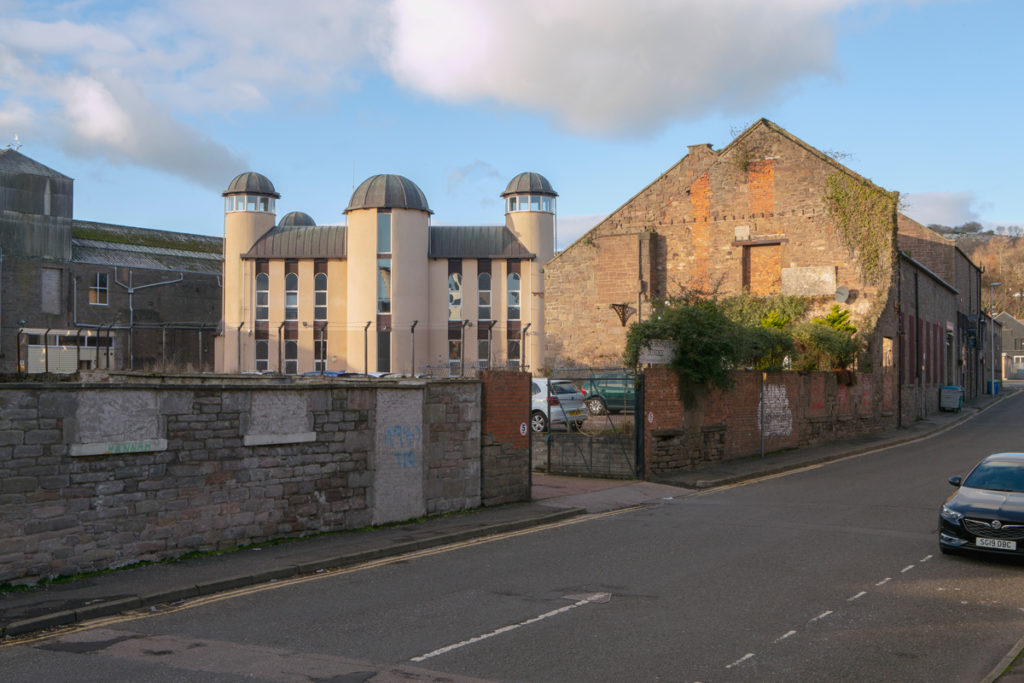
There is no set architectural style for mosques in Scotland. Dundee Central Mosque includes common features of a mosque, such as the domed minarets on each corner of the building. The front’s central and largest minaret is the mihrab, which accommodates an arched niche that is the focal point of the prayer hall, indicating the direction of prayer towards Mecca.
The most recent and purpose-built place of worship is the al-Maktoum Mosque located along Wilkies Lane. It has been operating since 2017. Like Dundee Central Mosque, its signifying features are the minaret and crescent moon.

The al-Maktoum Mosque.
Inside, geometric patterns on the carpentry and windowpanes within the women’s prayer hall hint at the Islamic origins of the space.
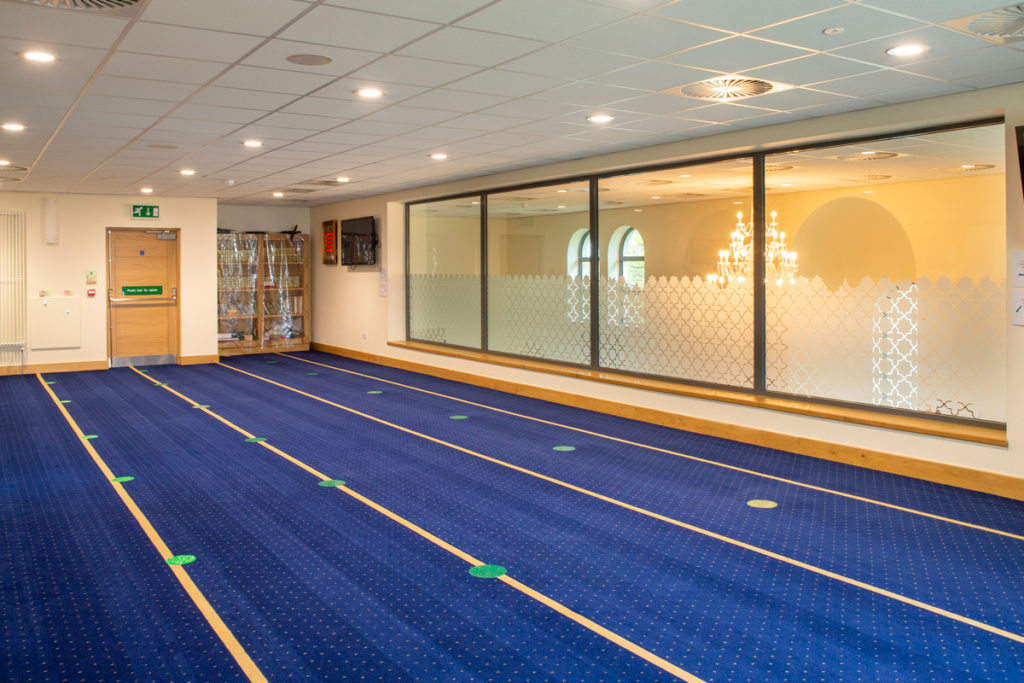
The ladies’ prayer room of the al-Maktoum Mosque.
These mosques are wonderful examples of the Islamic architecture you can find cropping up throughout Scotland. There is subtlety in their appearance, as they blend effortlessly into Dundee’s landscape like the re-purposed places of worship in the city.
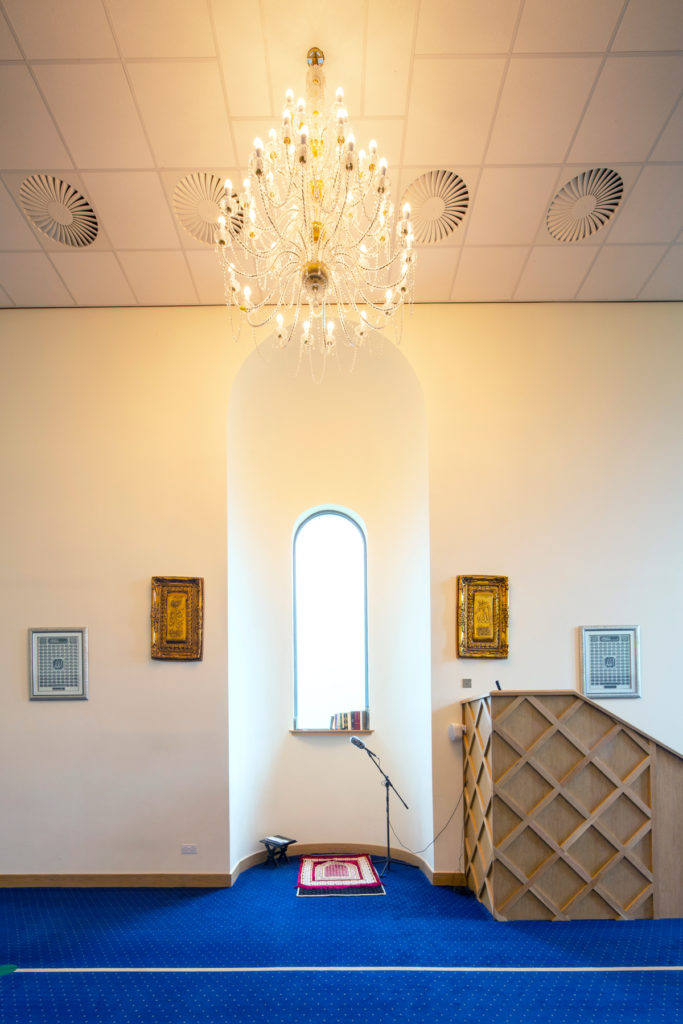
Two features of a mosque are the qibla and the mihrab. The qibla is the direction Muslims face when praying toward Mecca and the qibla wall is the wall in a mosque that faces Mecca. The mihrab, like the one above in the al-Maktoum Mosque, is a niche in the qibla wall indicating the direction of Mecca.
While focussing on a project recording Scotland’s South Asian Places of Worship, I have found these buildings fascinating, not only as a user but from the way the communities have adapted them for their needs.
All of these buildings are fascinating snapshots of Dundee’s South Asian communities from every decade since the 1960s. I view them as a celebration of the previous generations who became custodians of these buildings, unknowingly preserving and creating parts of the city’s built heritage.
